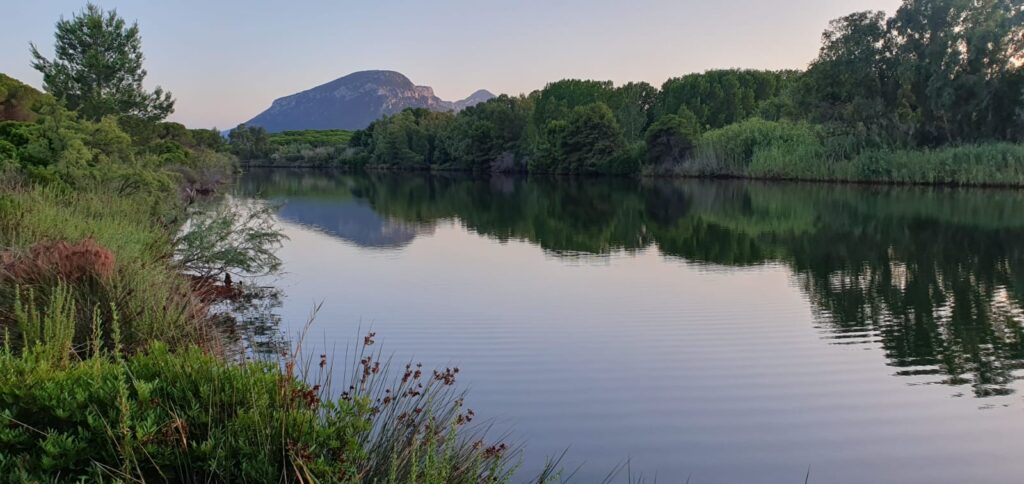
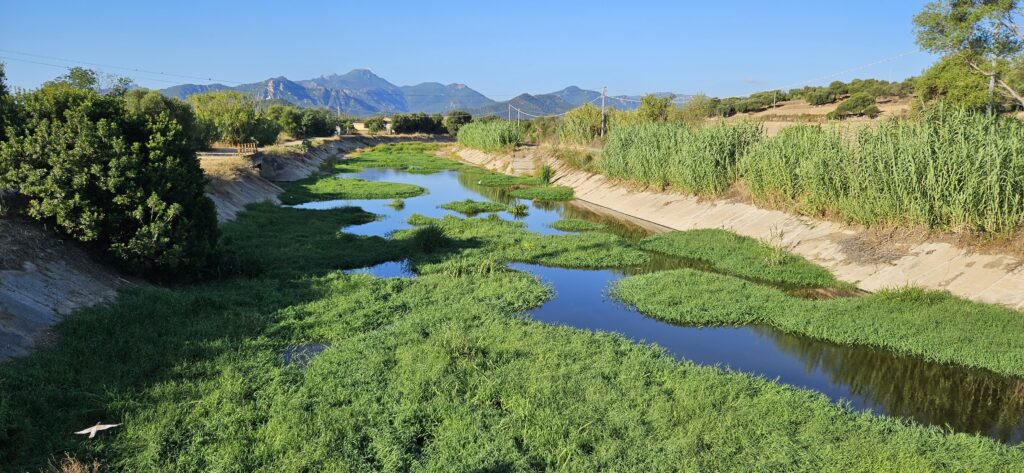
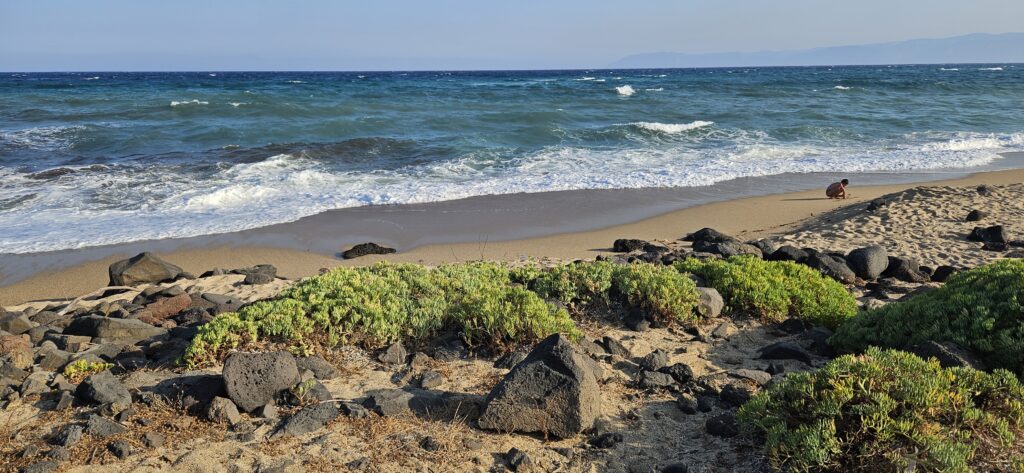
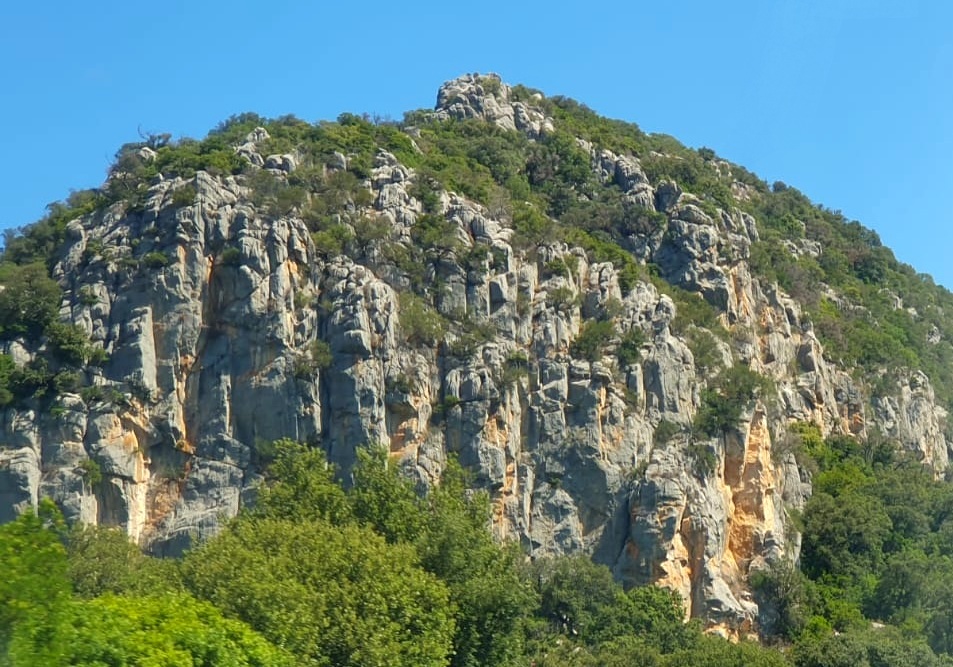
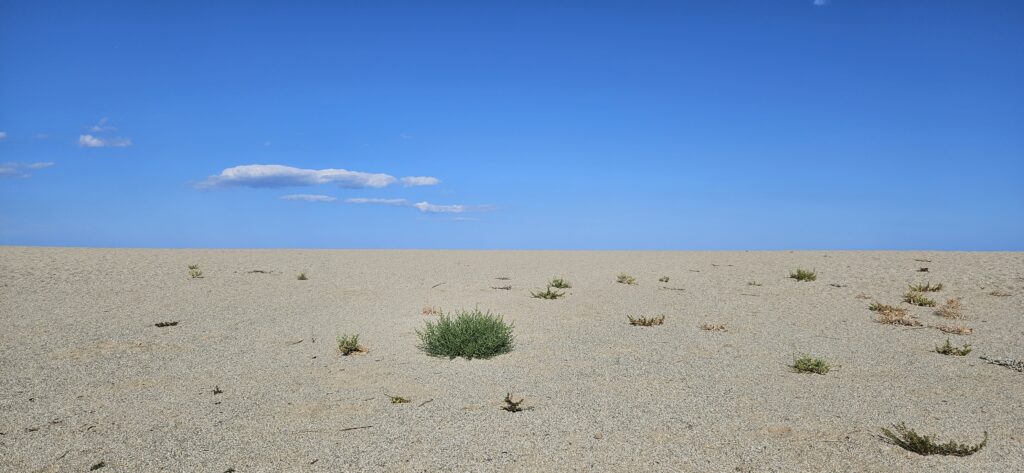
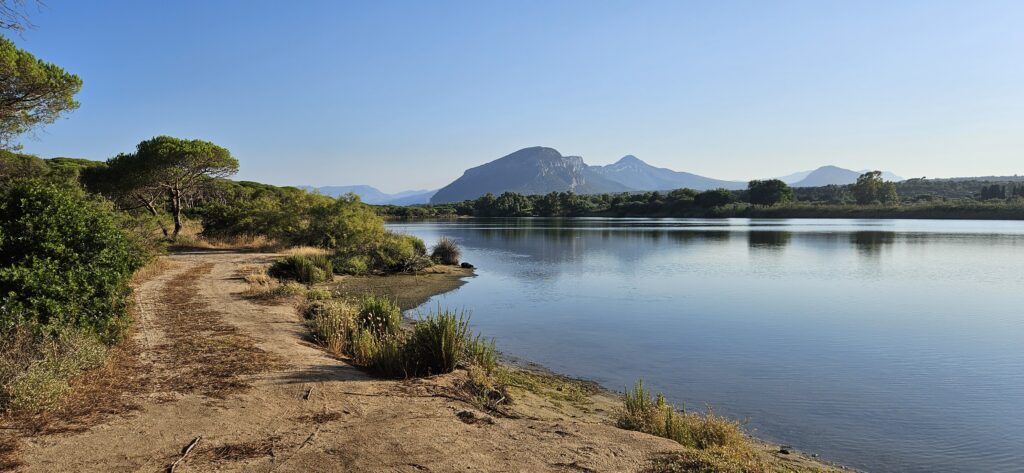
Landscape in Sardinia
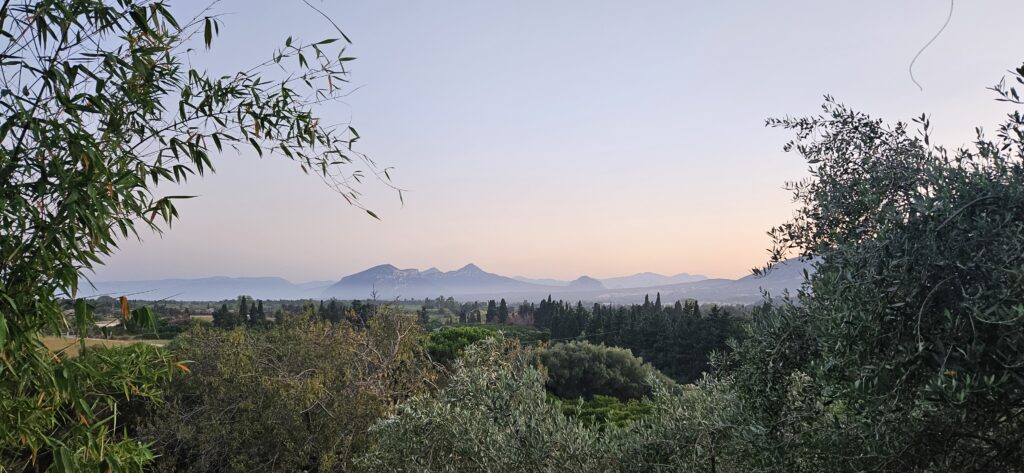
Supramonte
The Supramonte is the second-highest mountain range in Sardinia and lies in the Barbagia, a rocky, highly segmented plateau in the eastern part of the island. The range stretches across the provinces of Nuoro and Ogliastra and is known for its rugged limestone cliffs and deep gorges.
Geologically, the area consists mainly of limestone and dolomite, formed around 100 million years ago during the Cretaceous period. Dolomite is limestone with a particularly high magnesium content, making it harder and less reactive to water, yet it still forms spectacular karst features like limestone. Slightly acidic rainwater gradually dissolves the rocks, creating caves, sinkholes (dolines), and gorges, including the famous Gorropu Gorge, one of the deepest in Europe.
The vegetation is adapted to the karst terrain. Hardy trees such as holm oaks, cork oaks, and junipers dominate the rocky slopes. Maquis-like shrubs such as cistus, rosemary, and thyme grow in rock crevices, moister areas, and lower elevations. From March to June, orchids can even be found in the mountains, including endemic species like Ophrys panattensis and Orchis brancifortii, as well as Ophrys ortuabis, one of Europe’s rarest orchids.
East Coast
Eastern Sardinia enchants with a varied landscape of karst hills, dense maquis, mysterious wetlands, and wild coastal stretches – a true paradise for nature lovers.
The famous Gulf of Orosei stretches for about 40 kilometers and captivates with its impressive cliffs, almost deserted sandy and pebbly beaches, and breathtaking lagoons. Particularly, the Stagno di Petrosu lagoon in the municipality of Orosei is an ecological gem: it provides an important habitat for numerous marine and coastal animals as well as a variety of bird species, inviting visitors to discover the quiet beauty of this unique place.
This tranquility is most impressively experienced from the water. For anyone seeking true peace, a canoe trip on the Stagno di Petrosu is unforgettable. For nearly a week, we paddled in the afternoons well into the late evening, until darkness gently settled over the land. Apart from a few anglers, we were the only people on the water, even during the high season. It was the perfect setting to observe birds, crabs and fish undisturbed in their natural habitat.
We deliberately avoided the famous coves of the east coast – including Cala Goloritzé, Cala Mariolu, and Cala Luna – during the high season. This time, it wasn’t possible for us to be there at sunrise before the crowds arrived. Instead of jostling and noise, we enjoyed the untouched calm of Sardinia’s lesser-known corners.
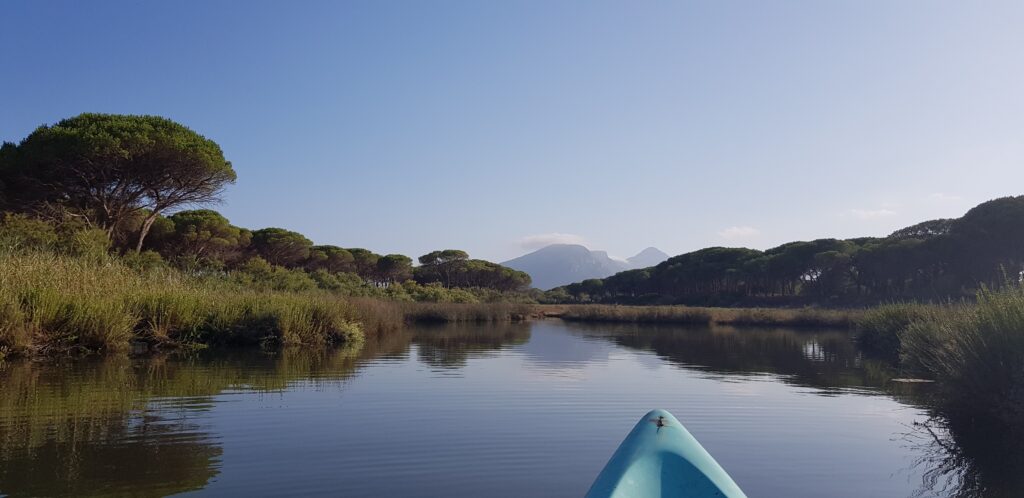
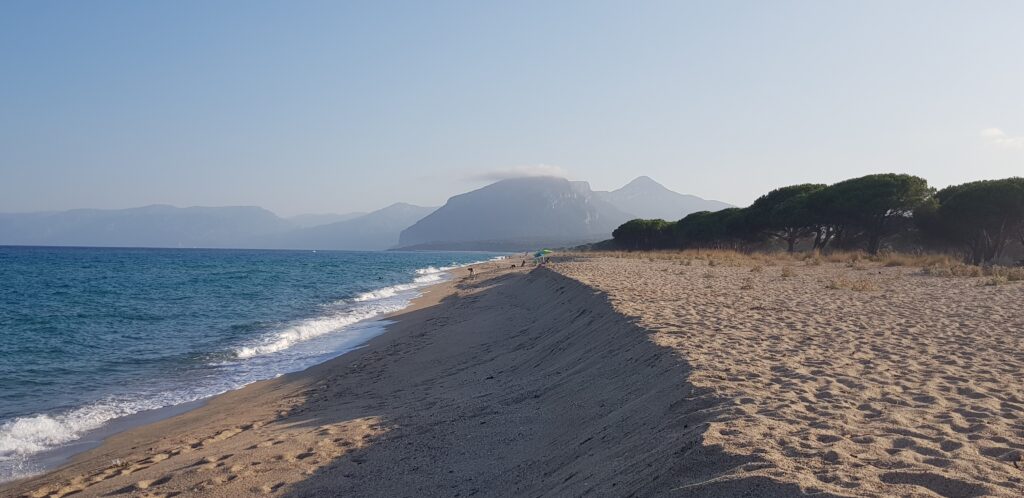
Reviving the Coastal Forest
Sardinia’s coastal landscape is exceptionally beautiful, characterized by pine trees, dunes, and the sea. However, over the years it has become clear that both the coastal forests and the dune systems have been weakened in many areas.
Coastal pine forests are often artificially planted (e.g., as protection against coastal erosion). These stands are monocultures, meaning they have low species diversity and are therefore ecologically less stable than a natural mixed forest. Diseases, storms, or droughts affect such monocultures more severely. Most of these forests were established in the 19th and early 20th centuries, at a time when the negative ecological impacts were still unknown.
The dune system, on the other hand, is dynamic, naturally highly changeable, and sensitive to disturbances. Sand on the dunes is constantly moved by the wind, plants usually only settle temporarily, and the coastline is continually shifting. This is a natural process, but it makes the dunes very vulnerable to disruption. Even minor interventions (e.g., walking on them or removing vegetation) can upset the balance.
Soil quality gradually declined, leading to reduced biodiversity and landscape damage. To counteract this development, a project was launched in the municipality of Bari Sardo to restore the ecological diversity and stability of the area. The project focuses on several key areas:
Increasing Biodiversity in the Forest:
Instead of monotonous pine plantations, the vegetation is being made more diverse. For this purpose, so-called “vegetation cores” have been created – small areas that serve as seed centers for new plants. Individual pines and sick or dead trees have been selectively removed to provide space and light for native shrubs such as mastic and other tree species like conifers, which can naturally settle here. Over time, this creates a more stable, diverse, and resilient forest ecosystem.
Creating Stable Dunes:
The dunes are a delicate system. They are easily altered and can quickly become unbalanced. Through targeted measures, such as building higher dunes and steeper sandy beaches, new dunes are formed and existing ones stabilized. Taller dunes act as natural protective barriers: they slow the wind and waves, retain sand, and provide plants with a stable substrate. In this way, they effectively protect the coast from erosion – the loss of sand and soil – and from the impacts of storm surges.
Managing Human Use:
Tourism is important for the region, but too many uncontrolled accesses and footpaths damage the dunes. Therefore, low wooden fences and clearly marked paths have been installed to guide visitors and protect sensitive areas.
Raising Awareness:
Another part of the project focuses on education: tourists and locals are encouraged to learn more about the unique features and vulnerabilities of the coastal landscape. Only those who understand the value of this ecosystem will respect it.
Beaches
We were pleasantly surprised to discover almost deserted beaches in Sardinia, even during the high season. On some days, we were nearly alone by the sea, surrounded only by the sound of the waves and the sunlight sparkling on the water.
In the area around Orosei in the province of Nuoro, we especially enjoyed Spiaggia Su Barone, nestled between the turquoise sea with occasional stronger waves and the tranquil Stagno di Petrosu lagoon. Spiaggia Santa Maria and Spiaggia Osalla also had their own special charm.
Even more enchanting were the beaches further south, beyond Bari Sardo, near Cardedu in the province of Ogliastra, the least densely populated province in Italy. Here we encountered even fewer people; the gently sloping beaches invited relaxed walks, and the pebble coves made the water appear crystal-clear and sparkling. We fell particularly in love with Spiaggia dei Lobinas and Spiaggia di Foddini – little paradises where the peace and beauty of Sardinia could truly be felt. To our great surprise, dolphins even swam past the coast at sunrise – an unexpected gift from nature!
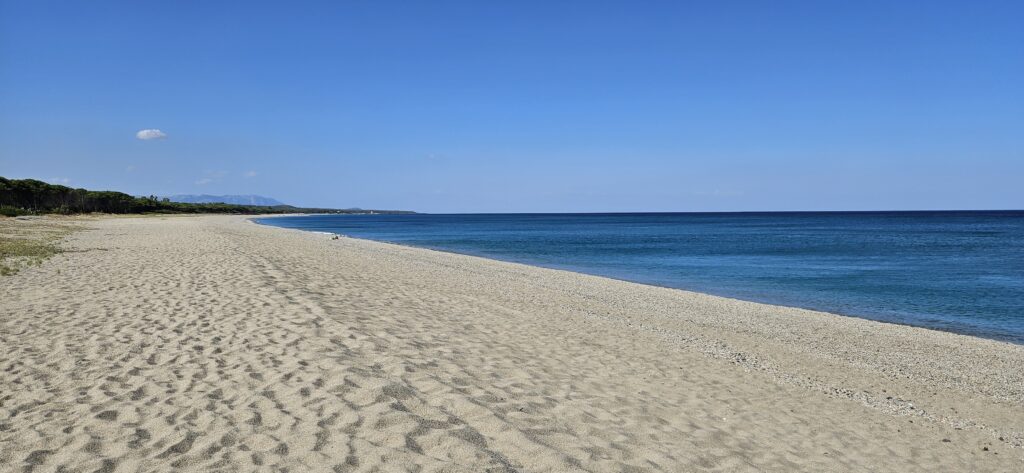




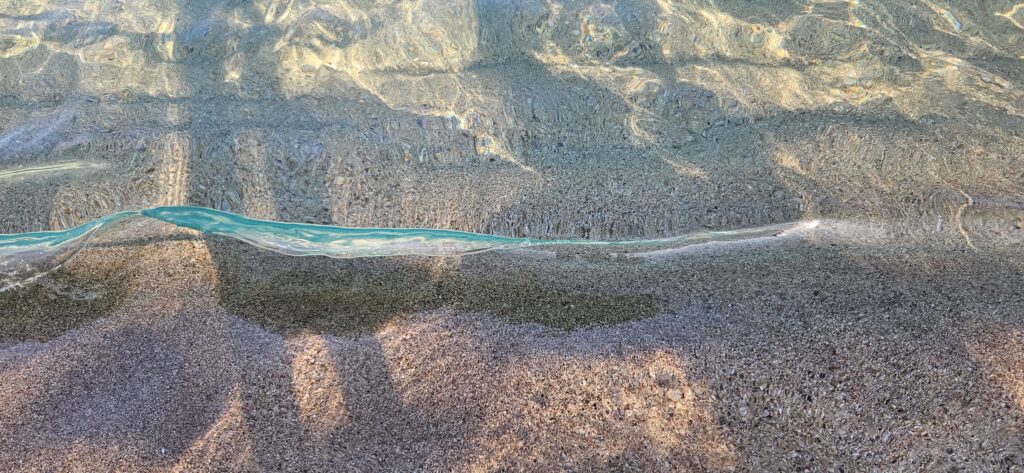
Leave a Reply